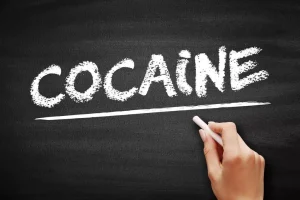
The team is currently more than halfway through a larger, five-year study of 80 people randomized to receive either psilocybin or a nicotine patch at the new Johns Hopkins center. Although we tend to think of addiction in terms of human behavior, it has neurological roots. are psychedelics addictive In the brain, addiction is manifested in what researchers call the “reward pathway.” When a person is stimulated by a reward — chocolate cake, their favorite song, good sex — the brain responds by increasing the available concentration of dopamine, a neurotransmitter.
Psilocybin Benefits
The reticular nucleus is of particular interest here because it is thought to serve as a sort of gate for processing signals to the cortex. It is a thin sheet of GABAergic neurons that has functionally distinct afferent and efferent connections with thalamic nuclei, the neocortex, the basal forebrain, and the brainstem. Rodríguez et al. (2011) found that the two major postsynaptic serotonin receptors in the reticular nucleus were of the 5-HT1A and 5-HT2A subtypes. Serotonergic projections from the dorsal raphe and supralemniscal nucleus (B9) were demonstrated to be the principal sources of raphe projections to the reticular nucleus. In addition to the cortex, the thalamus and reticular nucleus of the thalamus may also be important sites of action for psychedelics.

What are examples of psychedelic and dissociative drugs?
Administration of LSD to rats (0.5 mg/kg, i.p.) led to a significant increase in fos-like immunoreactivity in the rat PFC and ACC that was completely blocked by systemic pretreatment with the specific 5-HT2A antagonist MDL (Gresch et al., 2002). Double staining for both fos immunoreactivity and the 5-HT2A receptor revealed that LSD did not induce fos in pyramidal cells expressing 5-HT2A receptors in either the PFC or parietal cortex. Increased fos expression was induced in cortical cells in layers III and IV, with only rare occurrence of a doubly labeled pyramidal cell, suggesting fos induction by some indirect mechanism.
How does cannabis affect the mind and body compared to psychedelics?
More research is necessary to provide proof, but a few studies suggest that psychedelics may have a few uses relating to mental health and substance use disorders. A new article from Psychiatric Times discusses difficulties surrounding the integration of psychedelPsychedelics like MDMA and psilocybin are potential facilitators in a therapeutic process. This model, known as “psychedelic-assisted therapy,” emphasizes the synergy between the drug and the psychotherapeutic process to catalyze healing.

- RNase protection was used to validate these genes as differentially expressed, in the PFC, along with Arc and c-fos.
- Aggarwal is currently trying to get patients of his palliative care practice access to psilocybin via state and federal Right to Try laws, which allow patients with terminal or life-threatening conditions access to certain drugs before they have been approved by the Food and Drug Administration.
- LSD increased interfish distance in group shoaling and elevated whole-body cortisol levels.
- Such messages did not play well with the mainstream culture, all while the mass media fanned the flames of public hysteria with greatly exaggerated reports of drug-induced insanity, chromosomal damage, attempts to fly, and so forth.
- Importantly, the doses of R-DOI necessary to produce these therapeutic effects are orders of magnitude lower than those necessary to influence behaviors.
On the basis of the effect sizes, there is no currently available treatment that can produce such long-lasting and high therapeutic efficacy. Large-scale, multisite trials now need to be implemented to determine whether these results can be repeated in a larger cohort of patients. Overall, at least in rodent models, psychedelics seem to exacerbate neophobia, increase responsiveness to sensory stimulation, and interfere with response habituation across multiple sensory modalities and behavioral responses (Geyer and Vollenweider, 2008).
- The fly has neurotransmitter receptors that drugs such as LSD, and more receptor-selective hallucinogens like DOI, directly target for their behavioral effects, including 5-HT2, 5-HT1A–like, and dopamine D2–like receptors.
- Cussac et al. (2008) reported differential agonist action for a series of serotonergic ligands, including LSD and DOI, and using CHO cells stably expressing the human 5-HT2A receptor.
- These compounds are distinct from compounds like ketamine and phencyclidine (PCP), which are sometimes referred to as psychedelics but have an entirely different mechanism of action.
- Use of the mouse HTR to study psychedelics has recently been reviewed (Fantegrossi et al., 2008a; Canal and Morgan, 2012; Halberstadt and Geyer, 2013a; Hanks and González-Maeso, 2013).
Emotional and social processing
- Ratings at the 14-month follow-up were undiminished compared with ratings at 1 month after the sessions.
- Although lisuride was found to decrease PPI, this effect was not blocked by the 5-HT2A antagonist MDL11939 or the 5-HT1A antagonist WAY , but was blocked by the dopamine D2/3 antagonist raclopride.
The most well understood and recognized signaling pathway mediated by the 5-HT2A receptor is coupling to Gαq, resulting in stimulation of PI-specific PLC (Conn and Sanders-Bush, 1984; Roth et al., 1984). This enzyme hydrolyzes phosphatidylinositol membrane lipids at the sn-3 position, generating inositol-1,4,5-triphosphate and diacylglycerol (Conn and Sanders-Bush, 1986; Williams, 1999). The inositol phosphates lead to release of Ca+2 from intracellular stores and diacylglycerol remains bound https://ecosoberhouse.com/ to the membrane and activates protein kinase C (PKC). One very important scientific consequence of the discovery of LSD also is often overlooked. The powerful psychologic effect of LSD was accidently discovered in 1943 (Hofmann, 1979a), followed only a decade later in 1953 by the detection of serotonin in the mammalian brain (Twarog and Page, 1953). The presence of the tryptamine moiety within LSD was also quickly seen to be the scaffold for the chemical structure of serotonin (Fig. 1).
Substance use disorders

Drugs that induce the psychedelic experience share a molecular mechanism of action—they activate a specific serotonin receptor (5-HT2A) on a specific subset of neurons in the cerebral cortex, cells that are essential for integrating incoming information to create our experience of reality. They also vastly expand the formation of synapses, intensifying neural plasticity, which many consider key to their therapeutic action. However, scientists need to carry out more clinical studies to investigate how effective psychedelics are for health conditions and the safety and long-term effects of psychedelics. This research presents encouraging evidence for the use of psychedelics in the treatment of a range of health conditions. However, researchers need to carry out more, and larger, well-designed clinical trials to help medical regulatory agencies decide whether to authorize psychedelics as medical treatments.

C. Functional Selectivity at the Serotonin 5-Hydroxytryptamine 2A Receptor


 ENG
ENG